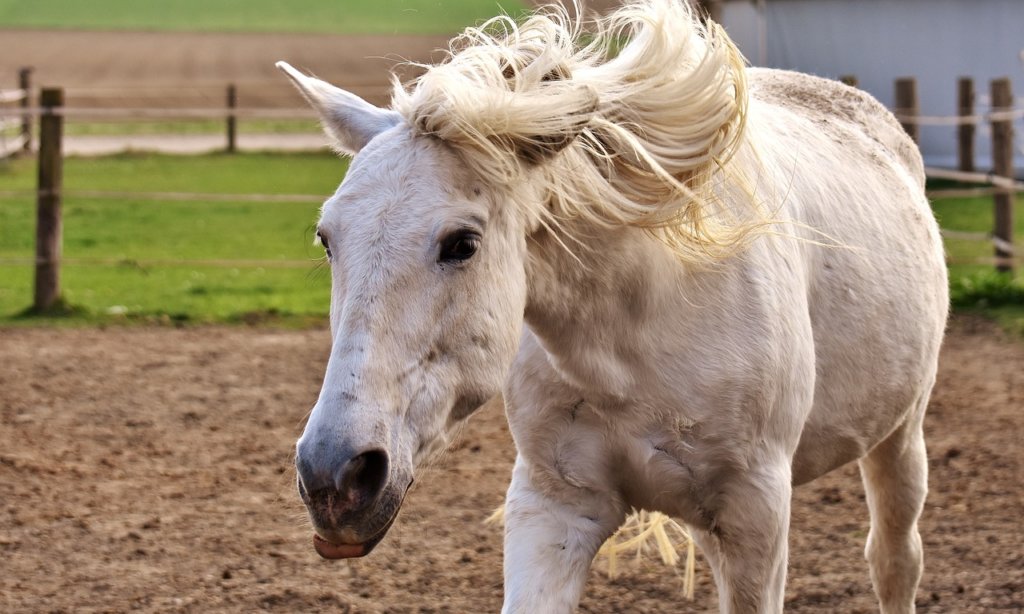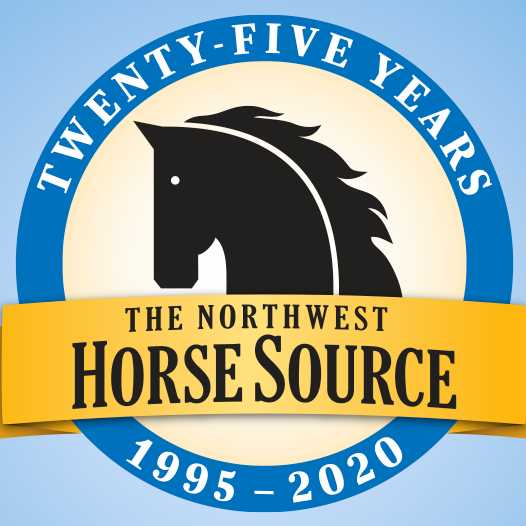 MESA, AZ – February 14, 2019. Four studies into why horses shake their heads and how best to manage or control this behavior have explored the question yet not found an acceptable answer. The condition has both welfare and economic implications for the horse and its owner since euthanasia is sometimes thought to be the only cure or solution.
MESA, AZ – February 14, 2019. Four studies into why horses shake their heads and how best to manage or control this behavior have explored the question yet not found an acceptable answer. The condition has both welfare and economic implications for the horse and its owner since euthanasia is sometimes thought to be the only cure or solution.
First, let’s define the problem. Equine headshaking is a normal, involuntary defense system designed to rid the horse’s neck and face of annoying and potentially pathogenic or disease-causing flies. Since there is little to no threat of flies in the dark, the winter or when the animal is in motion, a healthy horse will shut down this protective system in order to conserve the energy the shaking motion requires.
Some horses, however, exhibit headshaking – usually vertical and often quite severe – even when there are no flies present. This condition has frustrated owners and baffled veterinarians, scientists and researchers for some time. Because the cause remains unknown, an effective cure has been elusive.
Let’s take a closer look at the latest findings of four studies into equine headshaking. Click the links supplied below to read the entire article. Please note that this research deals specifically with idiopathic headshaking. That means other possible physical causes have been ruled out, such as ear mites, otitis interna, injury, ocular disease, guttural pouch infection, dental problems and sinusitis.
Article 1. Trigeminal Nerve Root Demyelination Not Seen in Six Horses Diagnosed with Trigeminal-Mediated Headshaking. Published May 15, 2017 in Frontiers in Veterinary Science by authors Veronica L. Roberts et al.
The authors found that no histopathological abnormalities were detected on microscopic examination of the trigeminal nerve root, trigeminal ganglion, infraorbital nerve and caudal nasal nerve in the headshaking horses. In fact, no histological differences were detected between samples from headshaking and normal horses.
Article 2. Alterations in Metabolic Status and Headshaking Behavior Following Intravenous Administration of Hypertonic Solutions in Horses with Trigeminal-Mediated Headshaking. Published June 25, 2018 in Animals: MDPI by authors Shara A. Sheldon et al.
Changes in blood components (pH, electrolytes) are known to affect nerve pain. To investigate this more, three different fluids with varying pH and electrolytes were given in the vein to horses affected with trigeminal-mediated headshaking. IV injection of hypertonic sodium bicarbonate solution produced some beneficial but short-lived effects. The authors concluded, “Further investigations of changes in electrolytes that might affect nerve firing should be explored.”
Article 3. Trigeminal-mediated headshaking in horses: prevalence, impact, and management strategies. Published January 20, 2018 in Dove Medical Press by Veronica Roberts.
While this article provides an excellent overview of the prevalence and impact of trigeminal-mediated headshaking and a detailed description of its symptoms, it explores no cause and offers management strategies rather than treatments or cures. The nose net was recommended as the first treatment to try because it is cheap, non-invasive, risk-free, and is allowed in most competition at most levels.
Article 4. Intravenous infusion of magnesium sulfate and its effect on horses with trigeminal-mediated headshaking. Published January 22, 2019 in the Journal of Veterinary Internal Medicine by authors Shara A. Sheldon et al.
Administering IV magnesium sulfate was credited with having reduced headshaking by 29%; however, the improvement lasted only for two hours.
Although research is progressing, there is an easy and effective option for horse owners now.
Again, let’s assume that all other possible physiological causes of trigeminal-mediated headshaking have been eliminated and we’re dealing specifically with idiopathic headshaking.
It’s frightening, sad and unnecessary to think that euthanasia is the only cure when a simple 10-day treatment is effective and is available at a very affordable cost, with a full guarantee. Equiwinner is a patented, non-transdermal patch. It serves as a natural electrolyte-balancing system that restores normal blood pressure and healthy circulation in the headshaking horse. Both are necessary to end headshaking.
It’s safe, effective and easy to use. One single treatment can be effective for months, even up to one full year, when used as directed although severe cases may require additional treatments.
Equiwinner patches contain only natural balanced electrolytes. Nothing goes into the horse’s body – it simply recognizes the electrolytes in the patches and responds to them. There are no side effects and Equiwinner will never test positive in any competition, race, event or sport.
Since electrolytes are involved in every physiological process in the body, when you restore them to perfect health, several conditions disappear including bleeding, tying-up, anhidrosis and headshaking. Proper electrolyte activity will also keep horses hydrated and improve their general performance and health.
To learn more about electrolytes and their effect on horse health and performance, visit https://signal-health.com or call toll-free: 1- 877-378-4946.
About Signal-Health LLC
Signal-Health LLC is the North American distributor of EquiwinnerTM patches. The company is based in Mesa, Arizona, USA and in Thunder Bay, Ontario, Canada.

News from the horse industry. Sharing today’s information as it happens. The Northwest Horse Source is not responsible for the content of 3rd party submissions.







